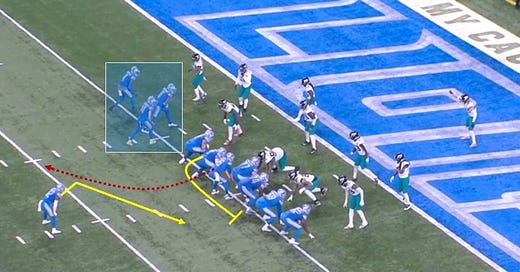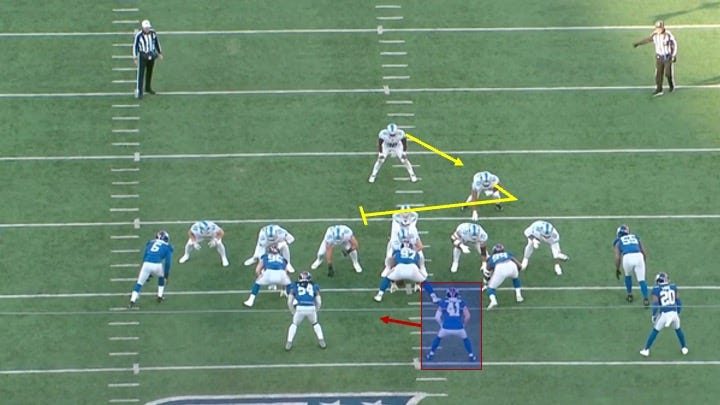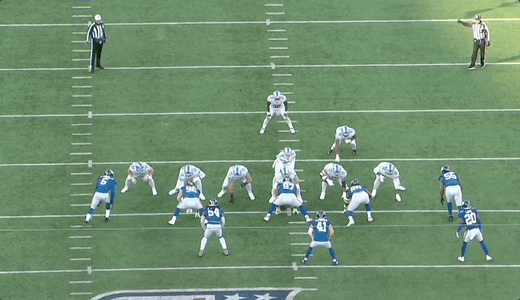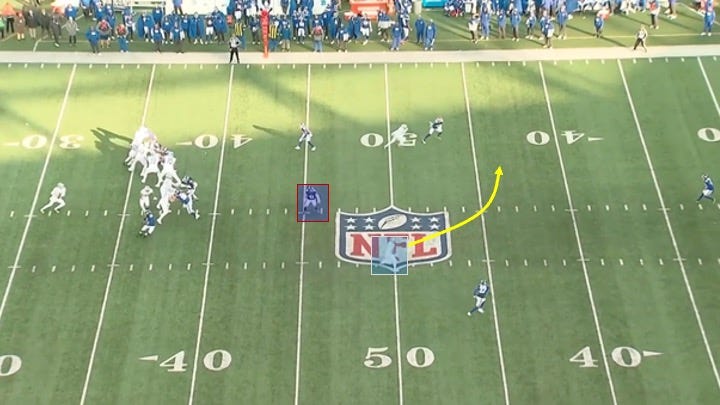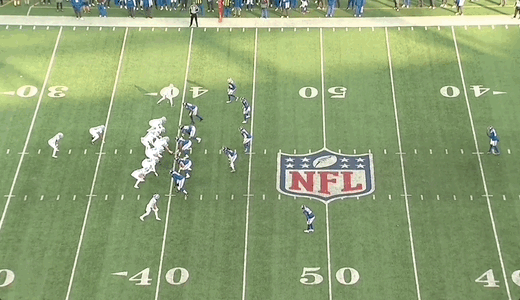A huge component of the Lions’ offensive success last season was their play-action passing game. Not only did almost 34% of their passing yards come off of some sort of run fake (ranking 5th in the NFL), but Jared Goff also led all quarterbacks in play-action passer rating.
One of the reasons for their success was that the Lions operated from under center on almost 50% of their plays, which was the highest frequency in the NFL. Much of their play-action game was from under center as well.
Why does that matter?
The simple answer is that a run fake takes longer from under center than it does out of shotgun. The read for the defense takes more time as a result, and this often creates more movement and false steps. Defenders get sucked up closer to the line of scrimmage, influenced away from the play, or at very least are delayed in their coverage drops.
How the Lions Offense Creates Indicators and Dictates Matchups
Offensive coordinator Ben Johnson does a great job of tying multiple elements of a play-action passing game together and giving defenders something extra to look at in the backfield. This leads to some big completions, as you’ll see below.
On this first example, Detroit aligned in an offset I-formation. The fullback used counter-lead action, stepping to his left before coming back to the right. That would influence linebacker Micah McFadden (#41), who mirrored the fullback before getting into his drop:
Now let’s go to the sideline angle and take a look at the route combination. The Lions were running a big post with a deep crosser underneath:
After biting on the run action, McFadden would turn to hunt up the crosser coming behind him:
But since he had already been influenced towards the line of scrimmage and to his left, and because of the extra time it took him to read the backfield action, he was not in position to impact a throw to the crosser.
With McFadden taken out of the play and the post from the other side taking two defenders with it, the result was an enormous window for the crosser:
There aren’t too many downfield throws that come much easier than that in the NFL.
This next example occurred in the Red Zone, where the Lions ranked 4th in the NFL in touchdown percentage. Play-action was often a big reason why.
On this snap, Detroit came out in 11 personnel and aligned with a trips bunch to the left. The run fake would be a counter-boot, with the left guard pulling:
As I said earlier, Ben Johnson gives defenders a lot to look at on play-action. This snap was no different. The run fake got the defensive end to crash hard inside and go after the running back:

